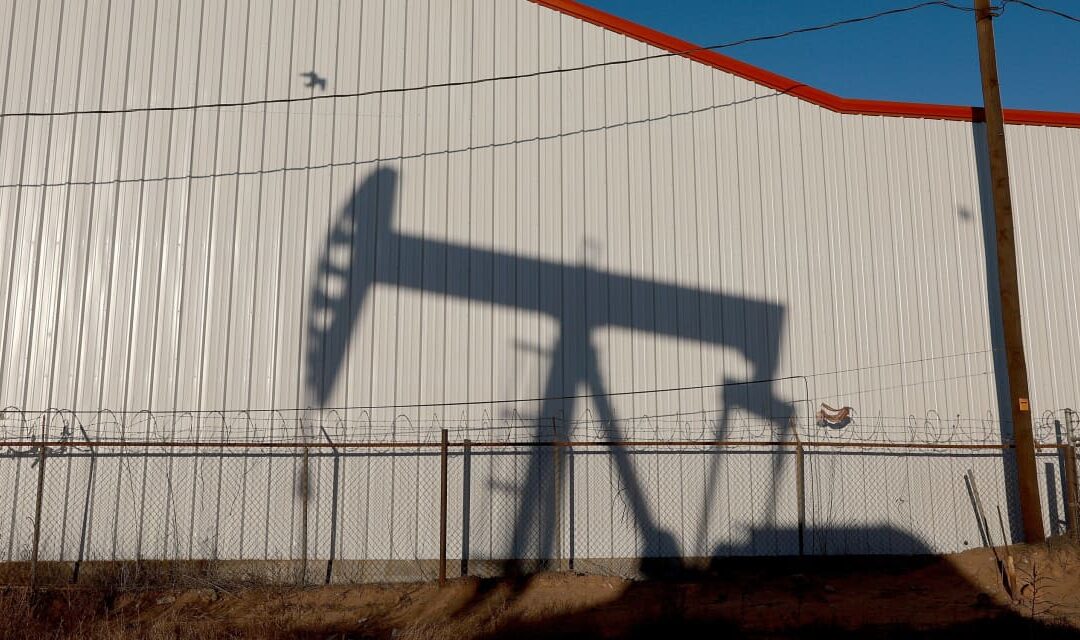Oil futures extended a decline Thursday following news reports that said Angola announced plans to exit the Organization of the Petroleum Exporting Countries after being required to lower its production quota in a contentious meeting earlier this month.
Crude futures were already under pressure, threatening to snap a three-day winning streak, after a build in U.S. petroleum supplies and record domestic production cooled a rally sparked by disrupted shipments in the Red Sea.
Price action
-
West Texas Intermediate crude for February delivery
CL00,
-0.58% CL.1,
-0.58% CLG24,
-0.58%
fell 63 cents, or 0.9%, to $73.59 a barrel on the New York Mercantile Exchange but traded off the session’s low of $72.44. -
February Brent crude
BRN00,
-0.58% BRNG24,
-0.58% ,
the global benchmark, was down 69 cents, or 0.9%, at $79.01 a barrel on ICE Futures Europe. -
January gasoline
RBF24,
-1.49%
shed 1.8% to $2.1607 a gallon, while January heating oil
HOF24,
-0.31%
fell 0.5% to $2.6963 a gallon. -
Natural gas for January delivery
NGF24,
+1.68%
traded at $2.479 per million British thermal units, up 1.3%.
Market drivers
Angola oil minister Diamantino Azevedo on Thursday told public television the country would leave OPEC because its membership in the group wasn’t serving its interest, Reuters reported. Angola produces around 1.1 million barrels of crude a day.
News Angola is leaving OPEC is lifting concerns that there might be “growing pressure within the OPEC cartel to raise production,” said Phil Flynn, senior market analyst at The Price Futures Group.
“On the surface Angola leaving OPEC is not that big of a deal because they can barely pump their oil quota,” he said, in a daily report. However, the concern is that “Angola’s departure might signal some underlying tension with the fact that the cartel is losing market share to non-OPEC producers and mainly the United States.”
Also read: Why 2023 was a tough year for commodities even as gold and orange-juice prices hit records
In a weekly report released Wednesday, the Energy Information Administration said U.S. petroleum production marked a climb to another record high at 13.3 million barrels a day, based on government data going back to 1984.
The weak tone in crude, meanwhile, shows that despite re-emerging geopolitical worries, “the market’s central attention remains steadfast on the enduring and fluctuating dynamics of supply and demand,” said Stephen Innes, managing director at SPI Asset Management, in a note.
Read The Year Ahead: Why oil may not see a return to $100 a barrel in 2024
Several shippers have suspended shipments through the Red Sea after a series of drone and missile attacks by Iran-backed Houthi rebels since the start of the Israel-Hamas war. The U.S. earlier this week announced a naval coalition would move to halt the attacks.
The situation in the Red Sea needs to be watched but as we go through the remainder of the month, trading volume to likely to lighten up, said Tariq Zahir, managing member at Tyche Capital Advisors.
The situation for oil has “not really changed much with cuts by OPEC announced and potential slowing of the U.S. economy battling each other for the next direction of crude oil,” he told MarketWatch. Zahir also said he does not believe it’s a big deal “at all” that Angola is reportedly leaving OPEC.
“We do expect, as we go into next year, for the energy markets to start a move higher,” although slowly and possibly choppy as we start the new year, he said.
As the energy market begins a new year, Zahir said prices may start a move higher, albeit “slowly and possibly choppy.”
Read: Attacks in the Red Sea add to global shipping woes
Brent and WTI rose for a third straight session Wednesday, ending at their highest since Nov. 30, but pulled back from session highs after data from the EIA showed a rise in U.S. crude, gasoline and distillate supplies last week.
Separately Thursday, the EIA reported that U.S. natural-gas supplies in storage fell by 87 billion cubic feet for the week ended Dec. 15.
That was slightly larger than the 83 billion cubic foot decline forecast by analysts surveyed by S&P Global Commodity Insights.









